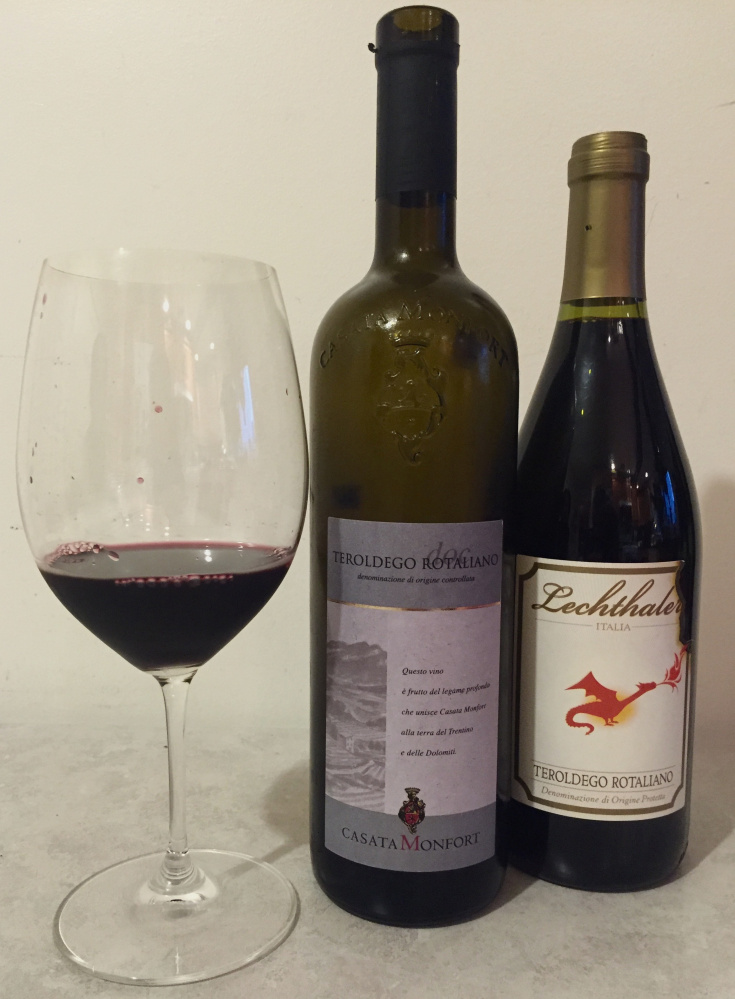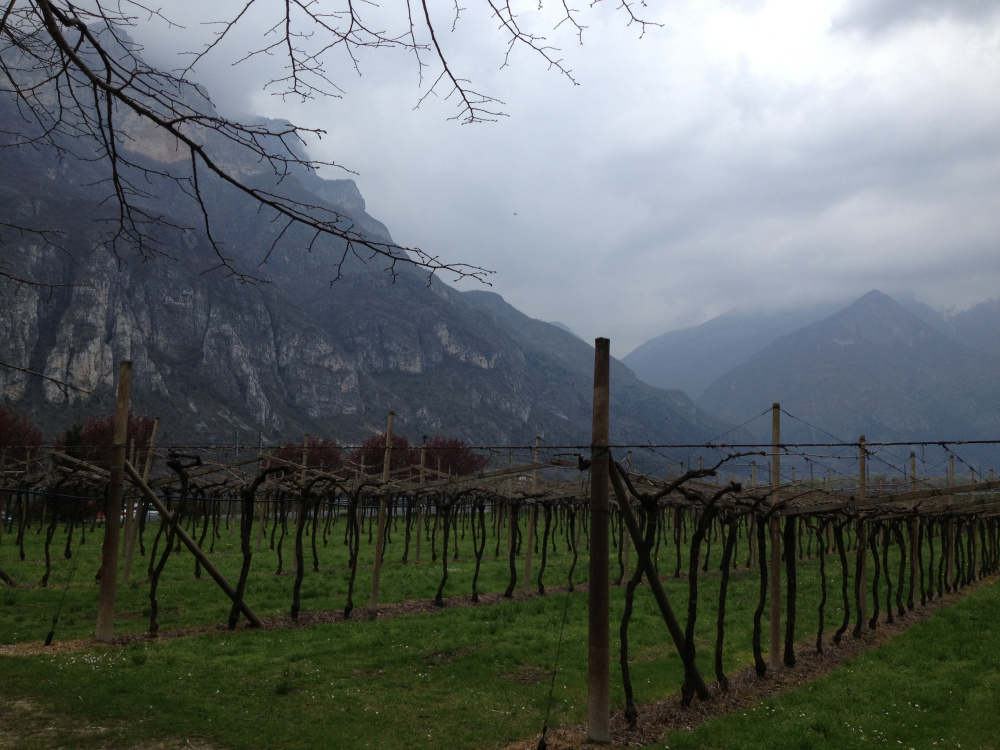Just when I start feeling I could spend the rest of my drinking life learning only about Italy, a corner of that nation comes along to remind me that such an endeavor is far too ambitious, that each sliver of topography is a world unto itself. Italy is not one country but hundreds of mini-states, and there’s no escape from the microscopic intricacy of wine.
It doesn’t take a vineyard-blanketed hot spot like Piedmont or Chianti to convince me. Consider Trentino, a narrow valley wedge dwarfed by the jagged Dolomite mountains, its northeastern border nuzzling Austria. Sometimes you see it referred to as Trentino-Alto Adige, but these two neighbors produce very different wines.
Alto Adige, Italy’s northernmost DOC, is esteemed for its distinctive white wines. With the sole exception of some gorgeous white wines from nosiola, however, the slightly warmer, more shielded vineyards of Trentino lean red. It’s here, high above the industrial-corridor highway snaking through the valley, where vineyards that seem to massage the Dolomite foothills grow one of Italy’s more distinctive grapes, teroldego.
Teroldego is grown throughout the region, and for that matter as a blending grape in Sicily and Tuscany. California and Australia, too, are home to teroldego vines. But as a single-varietal wine worth one’s attention and eventually, adoration, only Teroldego Rotaliano will do. The Rotaliano wines are grown in the Campo Rotaliano, a relatively flat plain in Trentino’s northern corner, between the towns of Mezzocorona and Mezzolombardo. The harmonious mating of its sand/gravel soils with this high-acid but rather dark-natured grape make Rotaliano one of Italy’s few officially recognized grand cru sites for a single varietal.
Teroldego rarely makes profound wines, but the grand cru designation indicates that the wines can be inordinately distinctive.
Teroldego Rotaliano is wild, spicy, tarry, bewitching. The wines draw you down a dark alleyway. This seems weird, since the other red wine grapes for which Trentino DOC is known are the relatively easygoing, unsurprising pinot nero (Italian for pinot noir) and the slightly darker but unthreatening marzemino. Tasted with those light-to-medium reds in mind, Teroldego Rotaliano is an utter shock, gripping and fierce.
Some California producers who play with teroldego liken its character to zinfandel’s.
However, given its low natural sugar content compared to zinfandel, and the cool, mountainous climate in which it excels, teroldego turns out far less blasting than most zins, with soft tannins and alcohol levels rarely exceeding 13 percent. That’s not to say the wines are restrained or flimsy; indeed what I love about them is an untamable savagery at their core. I often taste bracing, peppery links to syrah as well, which is fitting since recent genetic testing suggests that teroldego is an ancestor to that noble, strong-willed varietal. The genetic research also points confidently to teroldego as a father of the region’s other interesting indigenous red grapes, lagrein and marzemino.
Teroldego’s flavor signature is a heady mix. The fruit notes are rich and dark: cherries, blackberries. Those are common traits in a red wine, but it’s what balances them that is so compelling, things like quinine, squid ink, tar.
I really just sold it to you, eh? But think about how tar is a mix of gooey and strong. Or think about the mix of smells along the seashore or deep in the woods, where green and wood and stone and salt conspire. Think about a dish where the rich primary component (sweet potato, beef, cheese, whatever) is brought into clearer focus by background support from a flake of salt, an herbed oil, a seed.
Teroldego Rotaliano incorporates bitterness into fruit more fully than any other red wine I can think of. The wines are fun and alive, then feral, solo.
It’s this spirit that makes the wines ideally suited for autumn, the vitality of harvest making a last leap before it reads the whipping winds and approaching cold and heads underground. Now is the time of segue, and teroldego, in the way it merges comfort-food satisfaction with a bracing snap of coolness, reflects that.
Elisabetta Foradori is the widely acclaimed standard-bearer for Teroldego Rotaliano, using her biodynamically grown grapes to produce several different expressions each vintage. She is especially well known for fermenting in terra cotta amphorae, a process that communicates her single-vineyard Sgarzon 2010 ($40) with exceptional purity, delineation and verve.
It is just gorgeous, lissome wine, the richness and sinewy strength collaborating balletically, a bottle to drink over the course of four hours in slow, grateful sips. Dark fruit, cut by a smoky note and blood orange bite, reverberates through a long, fluid finish. There’s no other wine like it on earth: succulent, animal, capacious, blossoming, vital and serious all at once.
I’d say the Lechthaler Teroldego Rotaliano 2012 ($13) should be the “starter wine” for anyone interested in teroldego, though in some sense the Foradori ought to be your first since it’s so true and represents the grape’s deeper potential. Either way, an everyday-priced wine such as the Lechthaler deserves a place in your quiver of go-to reds for casual but hearty meals.
It’s on the rough end, the grape’s natural unrestrained character running without reins. Again the fruit is black, with more of those smoky aspects and inky savor. Think of it as almost the French table wine of Italian table wines, with a Rhôney piquancy and density in place of the soft simplicity found in too many “everyday Italian” reds.
The Casata Monfort Teroldego Rotaliano 2013 ($29) is very special, with the grape’s trademark boldness expressed in an edgier, more high-timbre fashion than the Sgarzon’s. Sleek, saturated blackberry fruit presents up front, a blueberry tartness lingers and then gives way to balsamic and seashore tones.
Like all these wines, the Casata Monfort benefits from some time decanted or in a glass, so that its mouth-coating concentration and surprisingly high acidity have the opportunity to engage each other. Eventually, it presents the muscle-bound elegance that seems teroldego’s birthright, in a clean, modern package that can ennoble a pizza as surely as it meshes with a simple grilled steak.
Each of these wines is cool and collected, if not calm. They express their mountainside provenance guilelessly, with equal parts power and grace. And there’s a huge “why didn’t I know about this before?” quality to them, yet another lesson in the infinite possibility of wine.
Joe Appel is the wine buyer at Rosemont Market. He can be reached at:
soulofwine.appel@gmail.com
Send questions/comments to the editors.




Comments are no longer available on this story